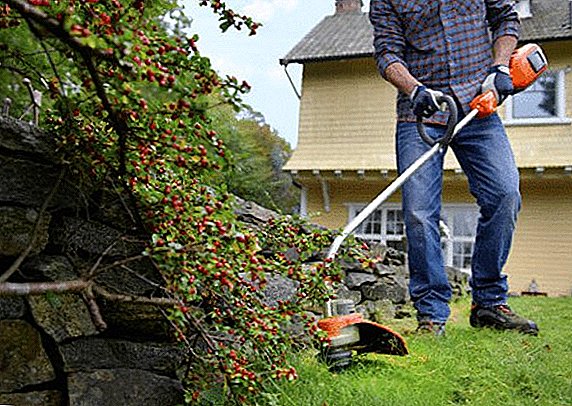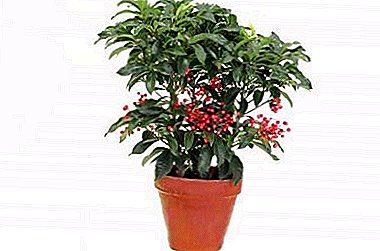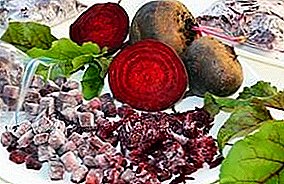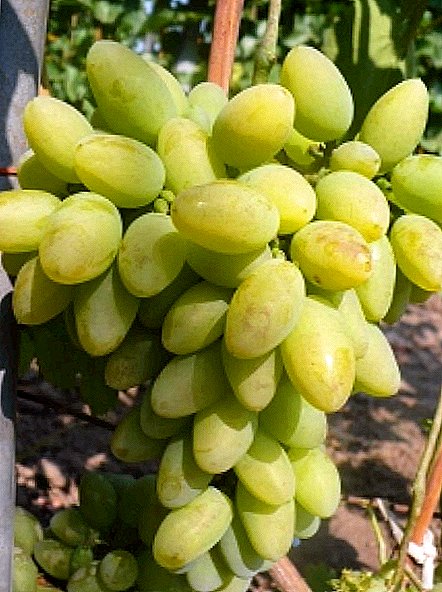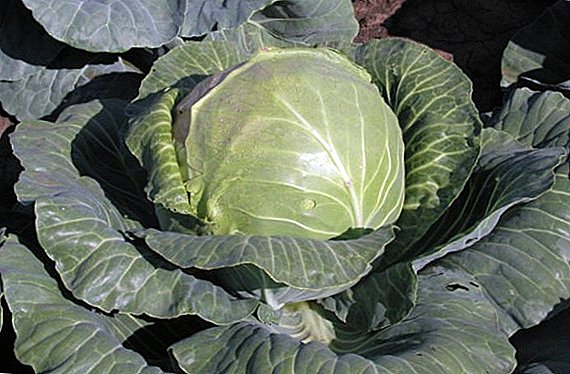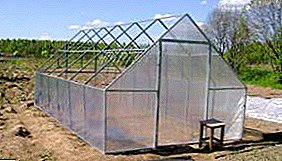
To take advantage of all the advantages of the greenhouse on the garden plot, even at the design stage, it makes sense to pay particular attention to the choice of materials for the frame and walls.
The durability of the greenhouse will depend on the strength of the frame, and the well-being of the plants will depend on the properties of the covering material. The best combination of these requirements demonstrates pair "profile pipe / cellular polycarbonate".
Features of the greenhouse on the frame of the profile tubes
Cellular polycarbonate according to its characteristics almost perfect for use as a material for greenhouses.
It transmits almost the entire spectrum of solar radiation, due to the presence of an air gap, it perfectly keeps the heat and is absolutely insensitive to the level of humidity.
However, the rigidity of polycarbonate does not mean the possibility of building frameless greenhouses. Under its own weight, the plastic sheets will quickly begin to sag, their edges will begin to crumble, and cracks will run along the surface of the panels. Therefore, the presence of the frame is vital.
Metal profile tube has several advantages before other frame materials:
- high mechanical strength allows not only to withstand the entire plastic walls of the greenhouse, but also resist snow loads up to 300 kg / sq.m .;
- rigid metal frame removes the problem of placing a powerful lighting and heating equipment necessary for the operation of the greenhouse in winter;
- assembly, disassembly and maintenance takes a minimum of time.
Of disadvantages there is only a slight increase in the cost of materials, as well as the need to use a special tool for creating arc structures.

 Greenhouses are made of very different materials and they can have different equipment. On our site you will find a lot of useful information about a variety of designs and equipment for greenhouses.
Greenhouses are made of very different materials and they can have different equipment. On our site you will find a lot of useful information about a variety of designs and equipment for greenhouses.Read all about LED and sodium lamps for greenhouses.
Design options
Exists several types of greenhouses with tube frame:
- Rectangular gable roof. Such greenhouses look like an ordinary country house and are characterized by the highest prevalence. Their convenience consists in a considerable internal volume, which allows growing tall plants not only in the central part of the greenhouse, but also along the walls.
- Rectangular Tunnel. They are distinguished by a flat roof, which saves costly pipes, but at the same time reduces the volume of indoor premises much. In addition, snow accumulates on the horizontal roof in winter, due to the internal heat of the greenhouse it turns into ice and threatens polycarbonate with its large mass.
- Arched shape. Notable for the most rational consumption of building materials. However, without special benders, bending a shaped metal pipe into an ideal arc is very problematic.
As the material is usually used pipes with a cross section of either 20 × 20 mm or 20 × 40 mm. The latter have such a margin of safety that can be used for any structural elements. But they have not the least mass and not always justified value for the greenhouse economy.

Preparation for construction
How to start building a greenhouse from polycarbonate and from a shaped pipe with your own hands?
The presence of a strong metal frame makes it possible to place the greenhouse at any convenient place in the backyard. It can cope with any wind loads without additional protection in the form of trees or walls of capital structures and reinforcement.
However, there remains a need to take into account the properties of the soil. Excess moisture in the greenhouse will not lead to anything good, so the soil under it should be as dry as possible. Usually the driest are soils with a high content of sand. An abundance of clay can signal a high risk of waterlogging.
On the cardinal points of the greenhouse so that with one long side they look to the south. Thus, it will be possible to capture sunlight at a large angle, excluding its reflection from mirror-smooth polycarbonate.
Having decided on the place, you can proceed to determining the size of the greenhouse and making a drawing. It is not recommended to refuse the latter, since it is impossible to fulfill our plans without errors without a paper scheme indicating all sizes.
When calculating a gable roof its angle cannot be made too steep. This can lead to an increase in the percentage of reflected solar radiation and reduce the efficiency of the greenhouse.
Greenhouse Dimensions and the dimensions of its individual elements are chosen not only on the basis of their own desires, but also on the basis of the actual length of the material available. The less scraps will remain, the cheaper the greenhouse will be.
Greenhouse do it yourself from polycarbonate (drawing) from a profile pipe.

 It is very important for any greenhouse to properly organize watering and heating, as well as to pick up its other equipment.
It is very important for any greenhouse to properly organize watering and heating, as well as to pick up its other equipment.Read useful materials about the drip irrigation system and the organization of ventilation.
Construction technology
How to build a polycarbonate greenhouse with your own hands from a profile pipe? All works are divided into several stages.:
- Markup. The marking is carried out with the help of pegs and a string drawn between them around the perimeter of the future greenhouse. In the future, this design will help not to make a mistake when building the foundation.
- Fully assembled metal frame is very resistant to twisting, although it also has a minimum number of vertical supports.
- pits are drilled in the ground;
- in the resulting holes lower trim asbestos-cement pipes;
- the free space between the pipe and the walls of the hole is filled with sand or soil (with tamping);
- the pipe is filled with concrete;
- In the upper section, a segment of a metal plate or reinforcement is immersed in concrete. These elements will be needed for the bundle of the greenhouse frame with the foundation.
- Frame assembly. Begin it with the assembly of the end walls of the greenhouse. Separate elements can be connected either by welding or by means of connecting tees, angles or couplings.
- Hanging polycarbonate panels. For fasteners of this type of plastic is best to use screws with heat washers. What fastening will allow to avoid penetration of moisture in polycarbonate that is fraught with deterioration of its properties.
- Installation of doors and vents. As the door jambs use additional vertical racks in one of the ends of the greenhouse. It makes sense to position the door not strictly in the central part of the butt, but with some displacement. This will give greater freedom of maneuver when planning beds.
These features make the best choice. in favor of asbestos-cement pillar foundations. It is arranged as follows:

In the latter case, additional bolting is required. In the case of welding, it is not necessary to cut off each frame element. It is possible to make angular cuts on the pipe at distances corresponding to the lengths of adjacent elements.

When one of the end walls is ready, it is welded or bolted to the fastening element of the columnar foundation. Then the same actions are performed with the opposite end wall and intermediate vertical supports, if any, according to the project.
The frame is completed by installing horizontal crossbars on the walls and roof.

To dock the panels together, special docking strips are used to avoid the appearance of gaps. Such slats exist for both flat surfaces and corner joints.
Windows in greenhouses are usually attached to the rafters of a gable roof. Otherwise, they do not differ in construction from the doors and are also made of a piece of cellular polycarbonate on a metal or wooden frame.

When building a greenhouse, it is also worth considering the location of the ventilation system, lighting, watering and heating.
After the greenhouse will be ready, it will be necessary to determine the location of the beds, to think whether you will make them warm in your greenhouse, whether you plan to drip irrigation.
And here videos about greenhouses from a profile pipe and polycarbonate.



